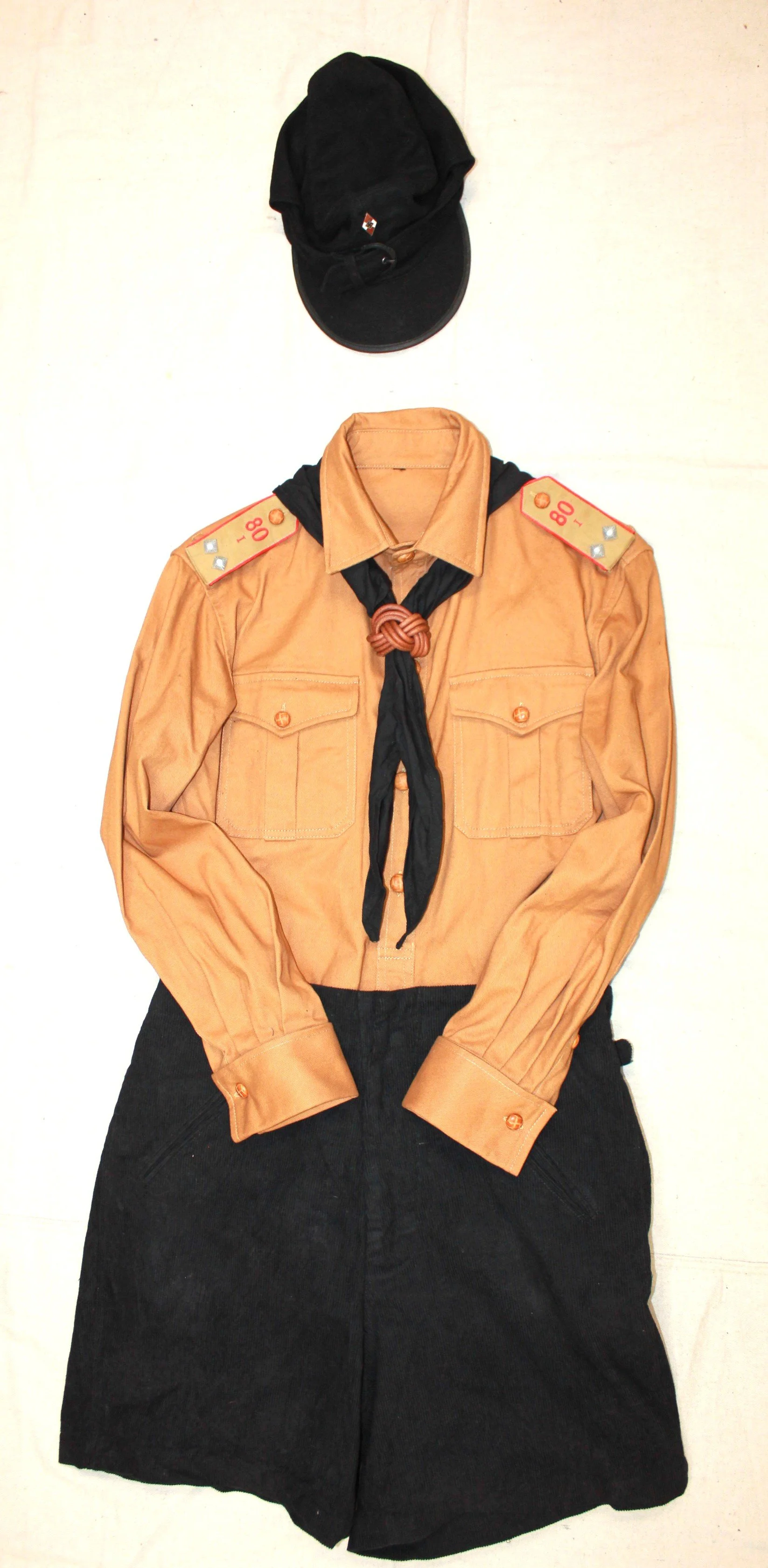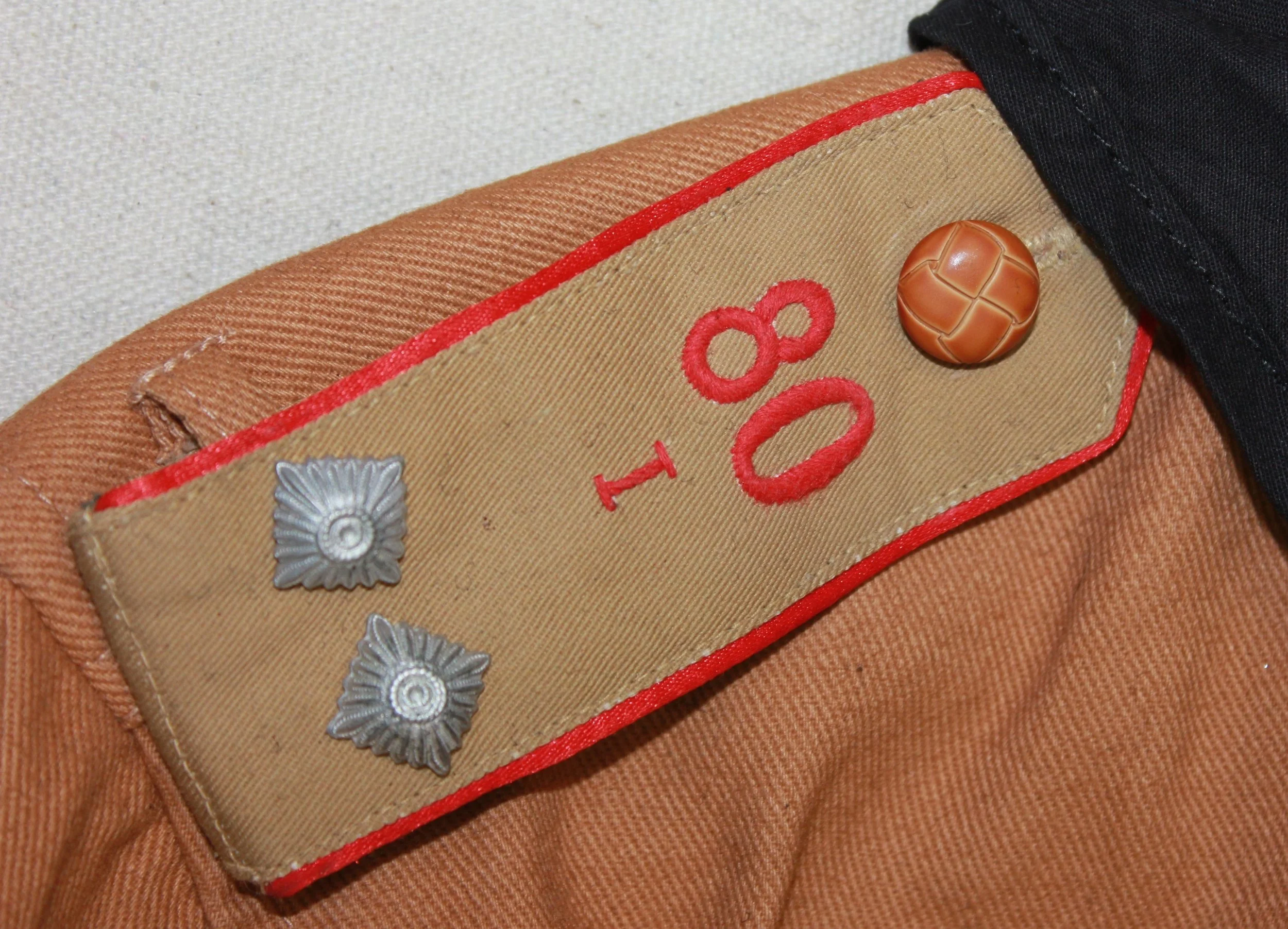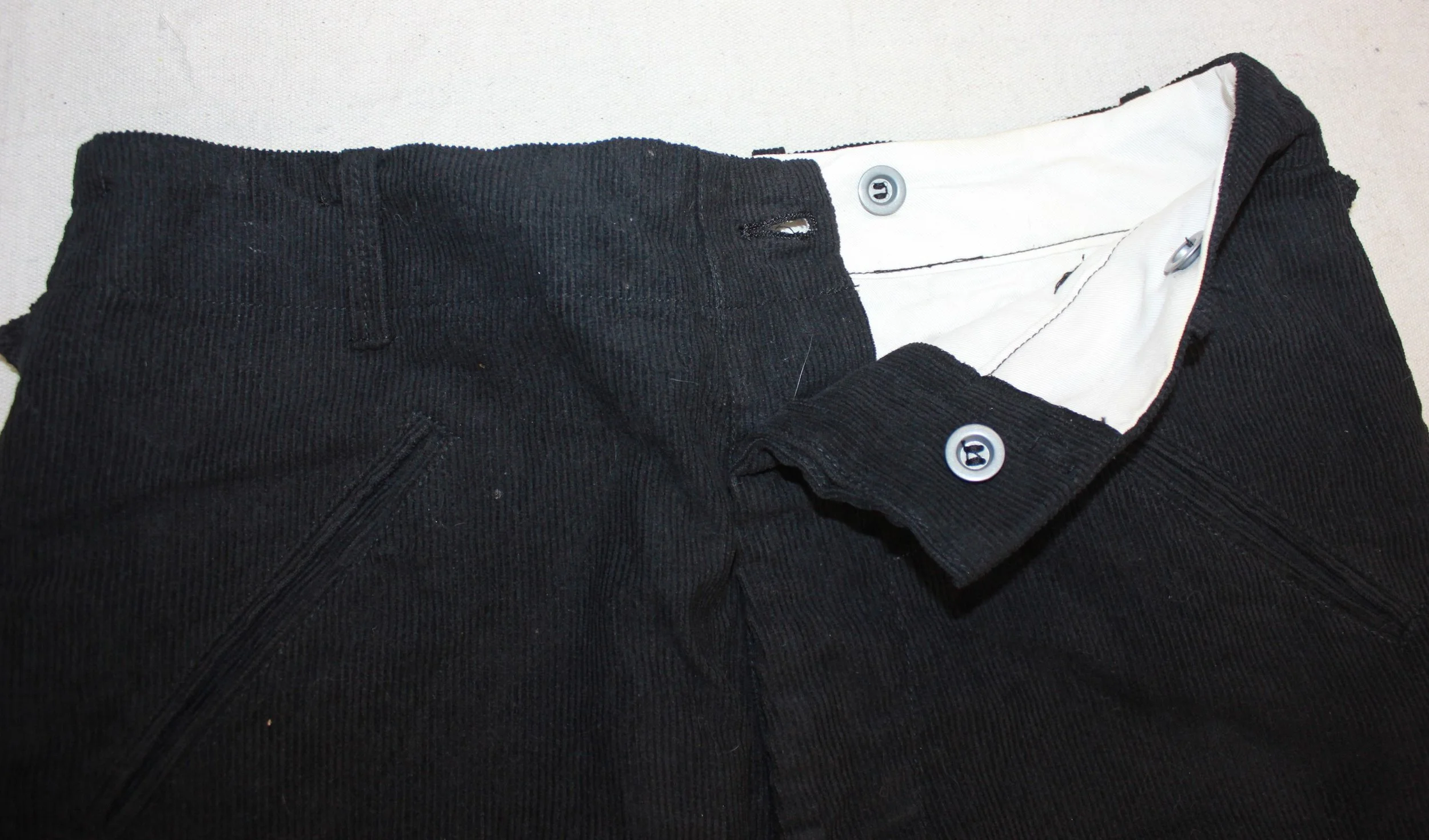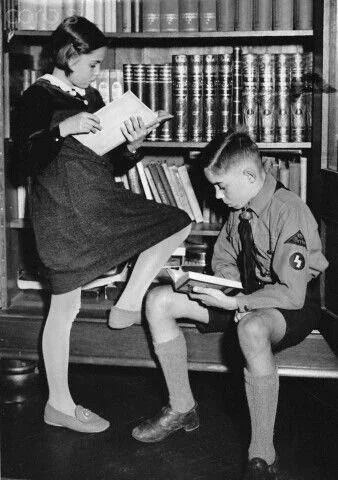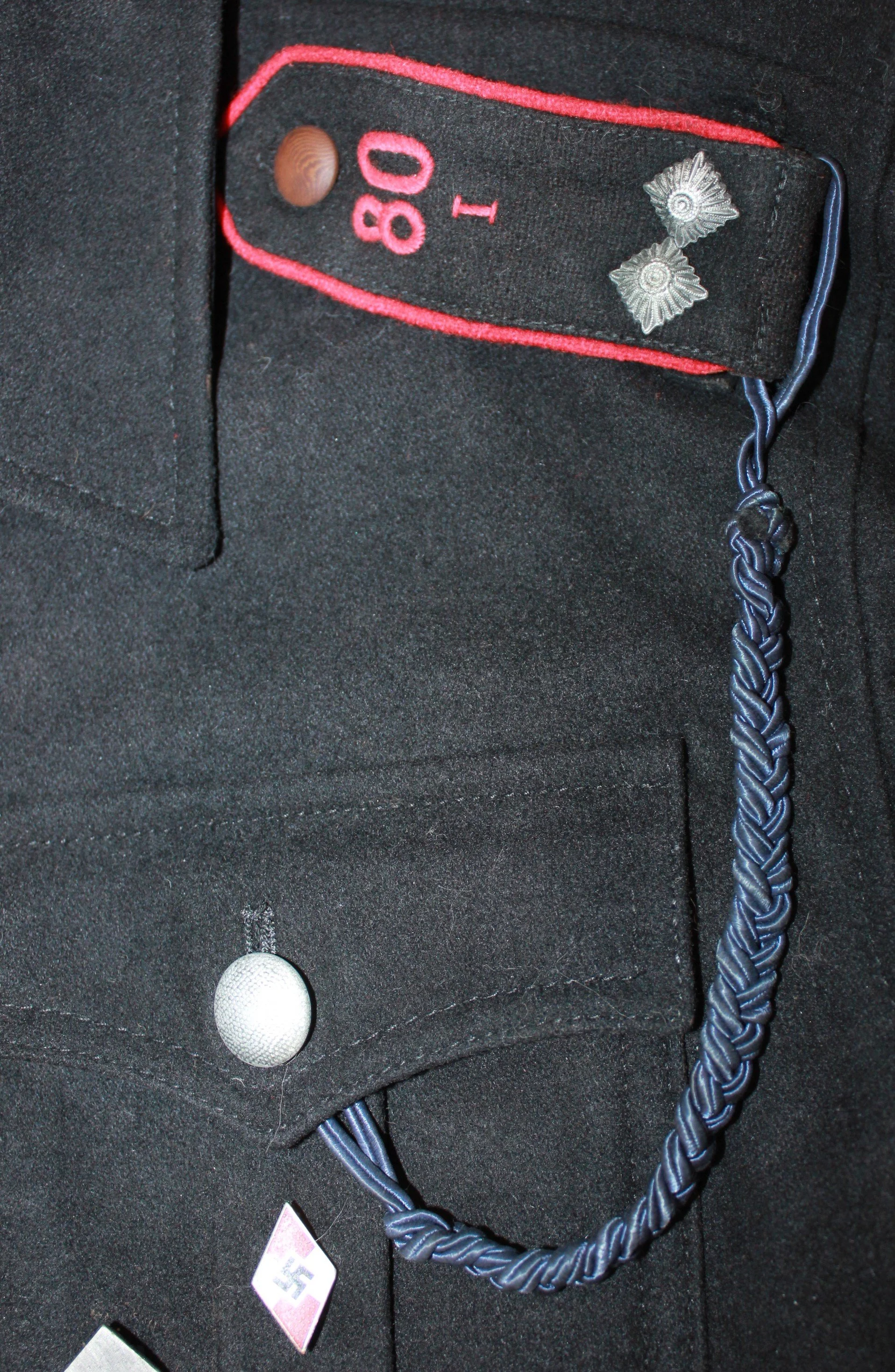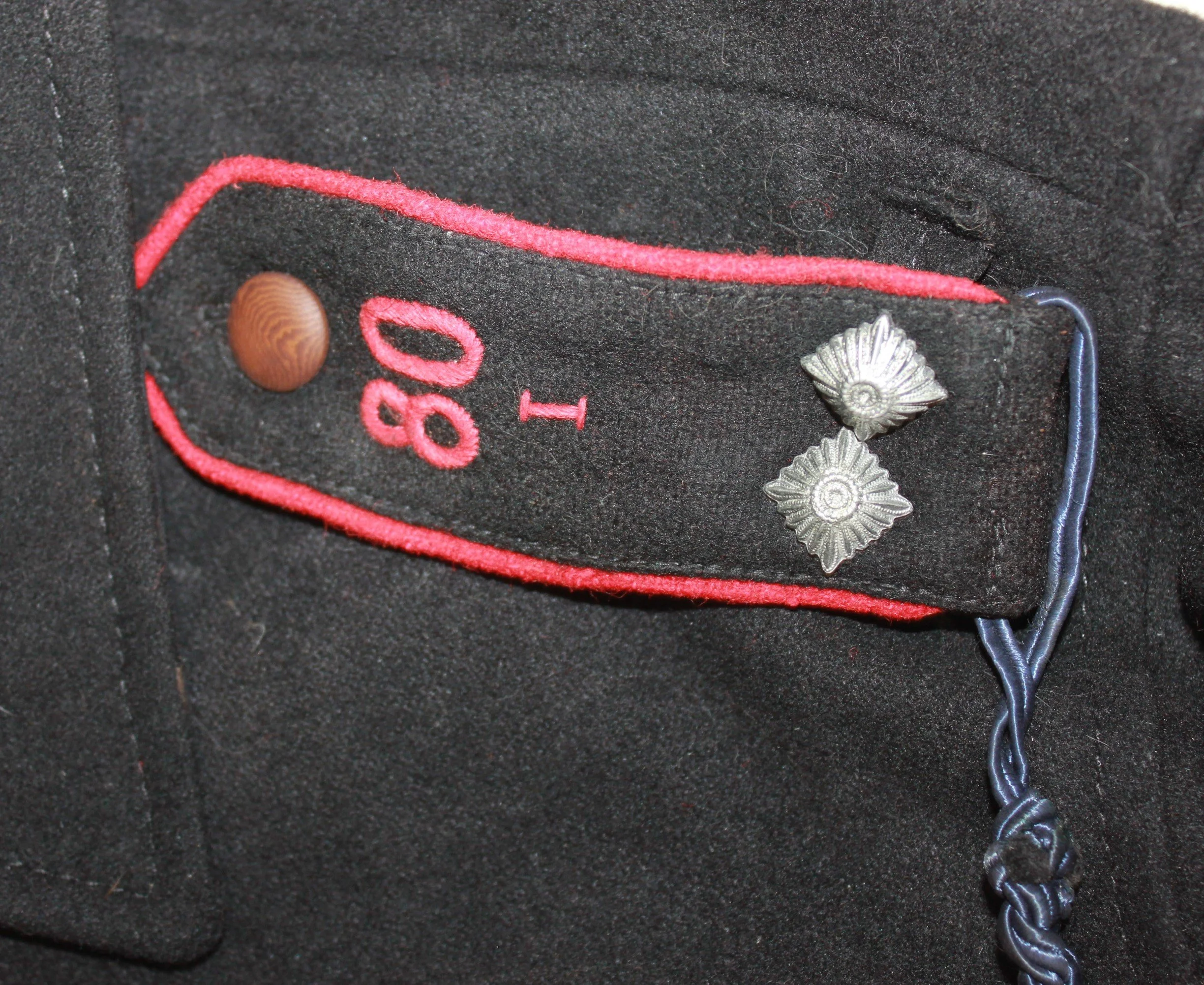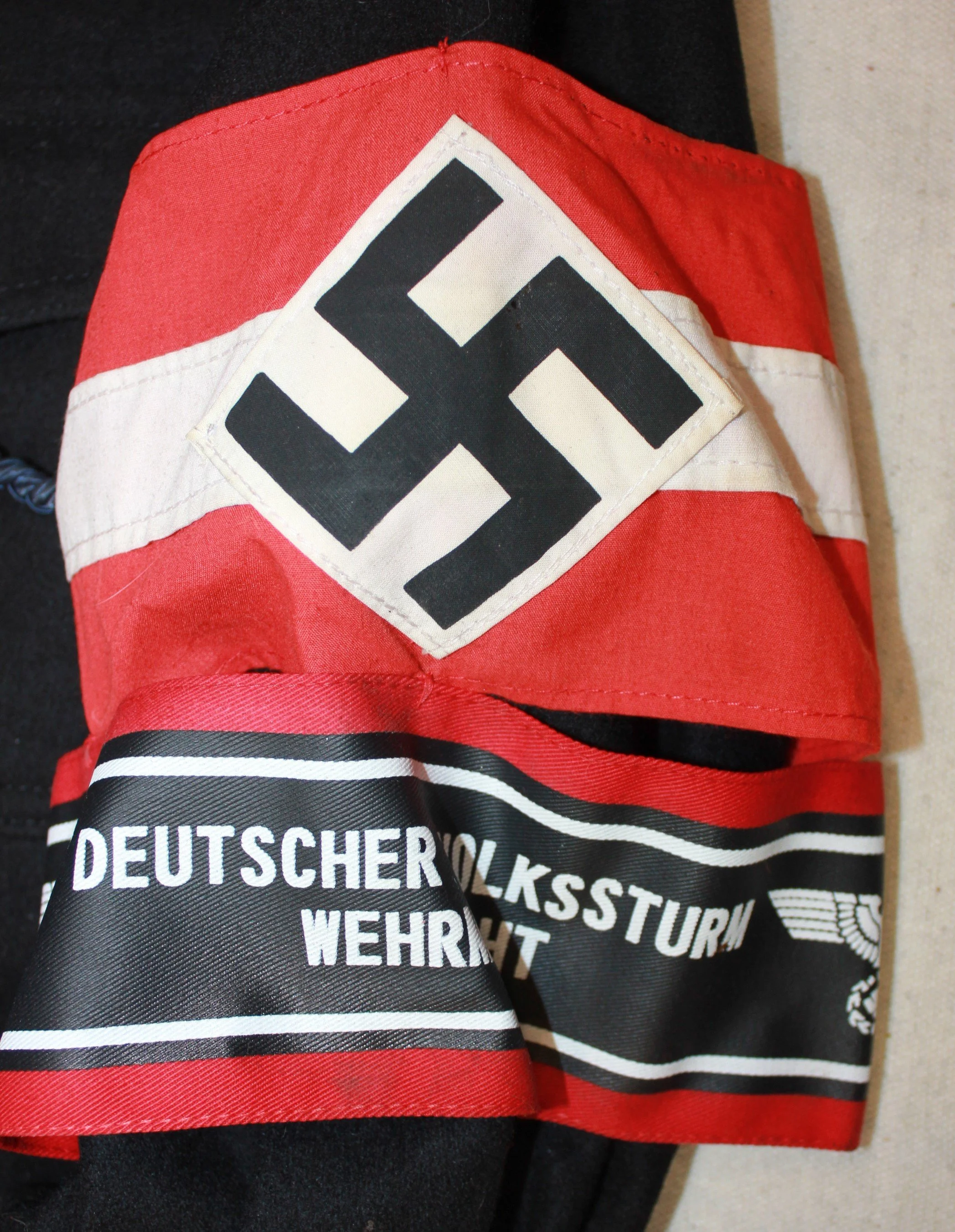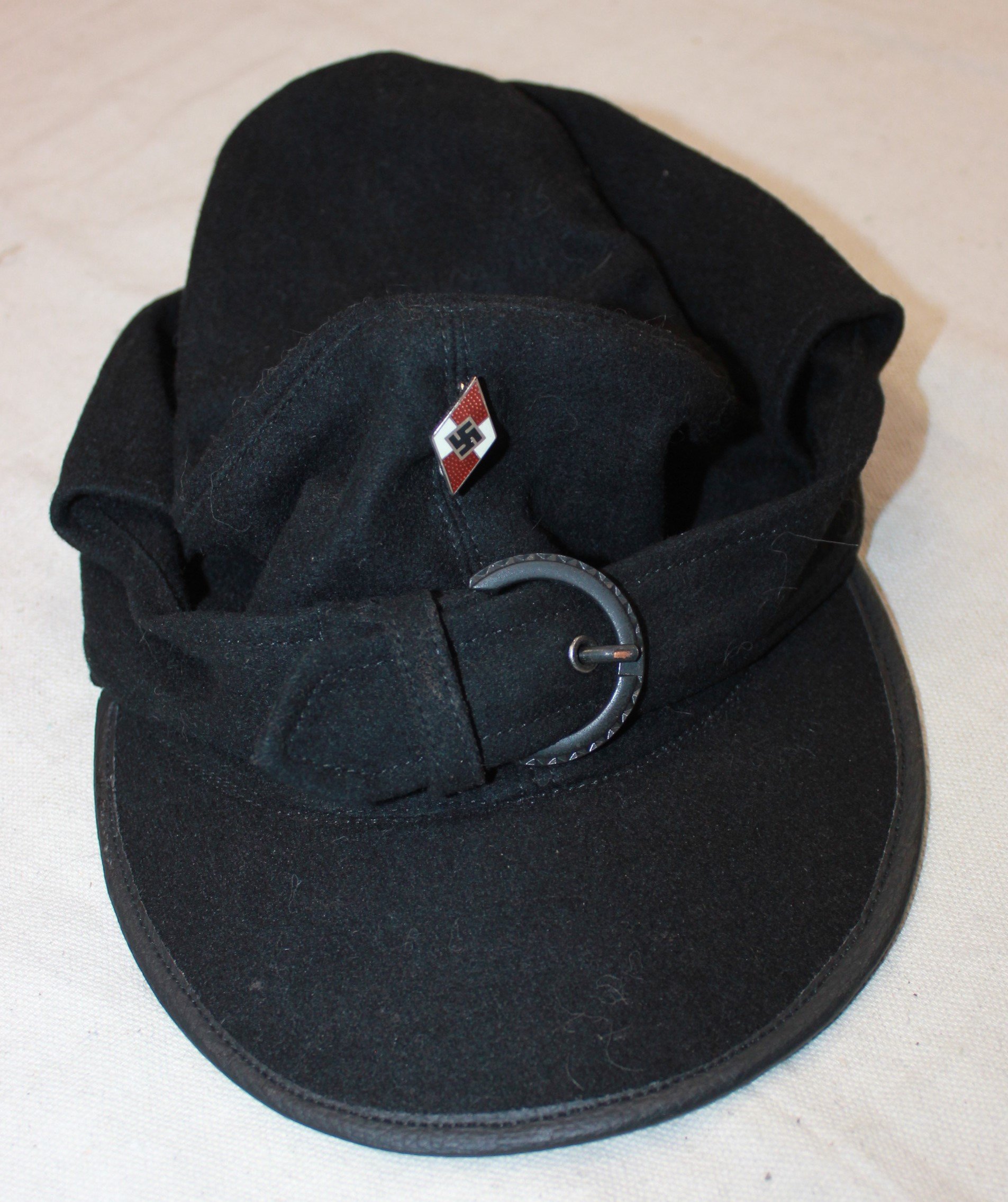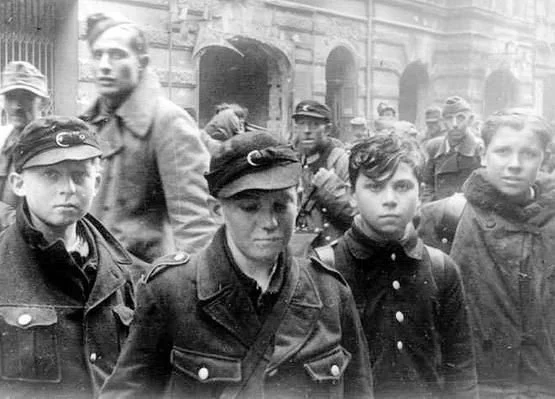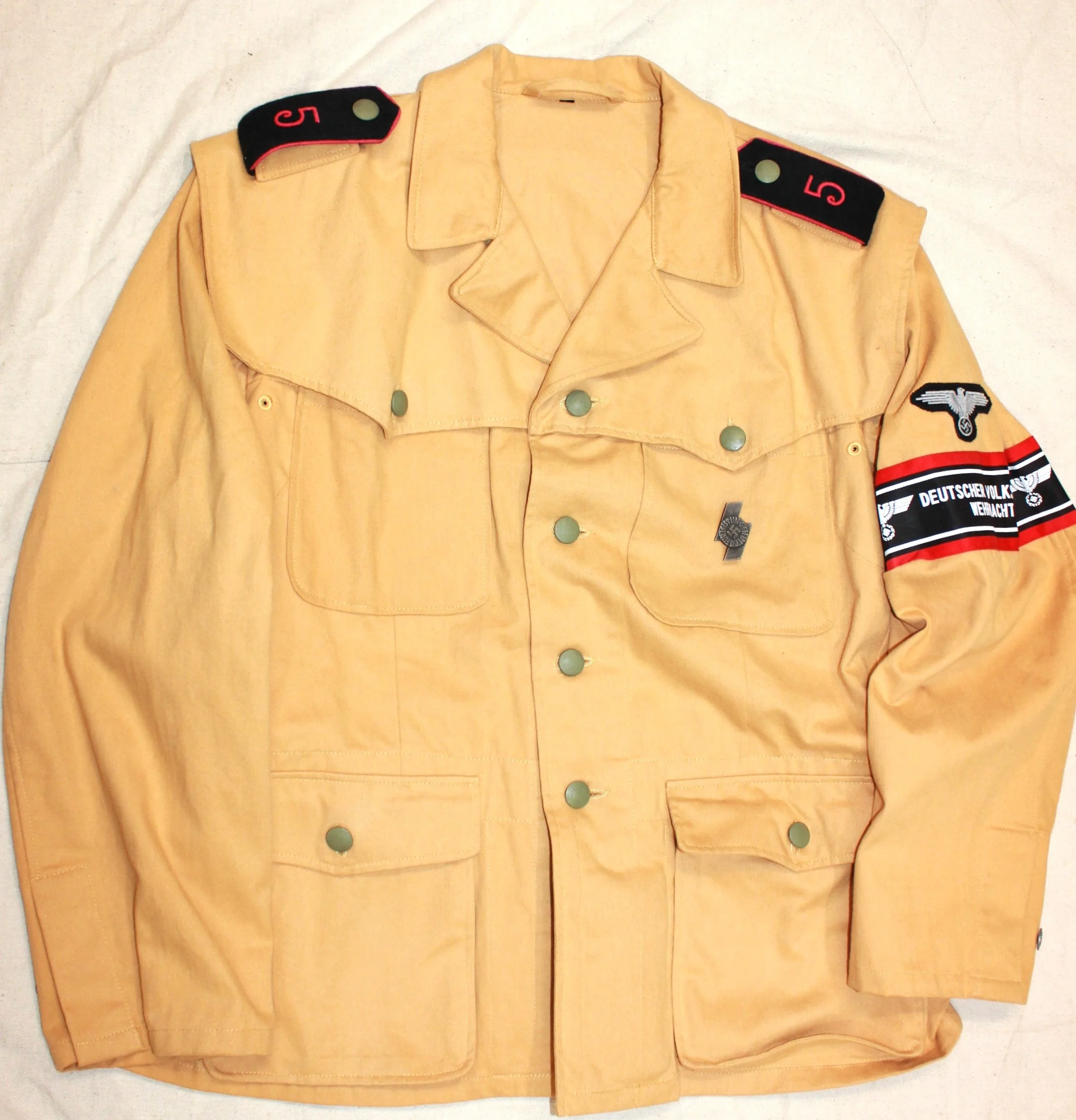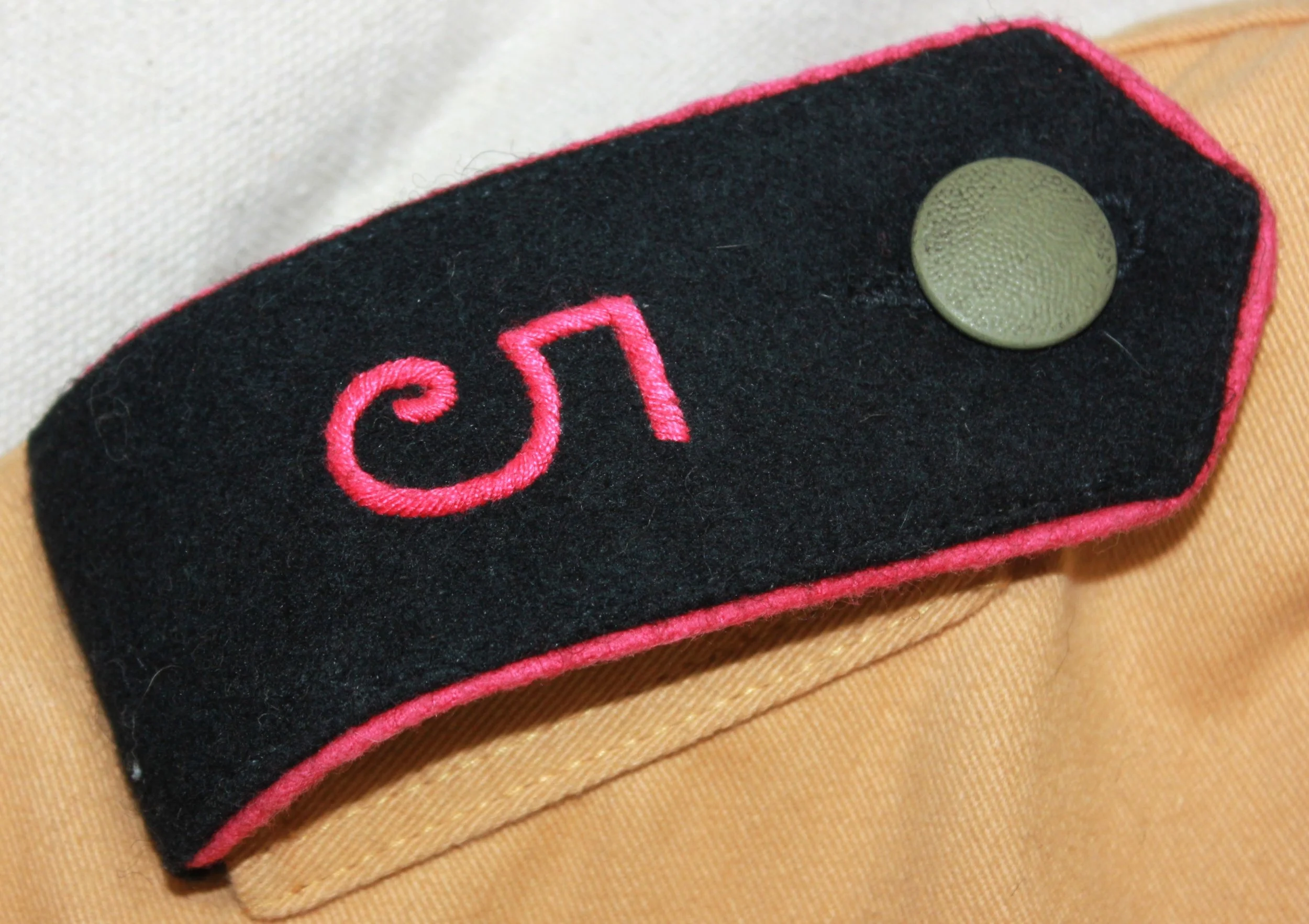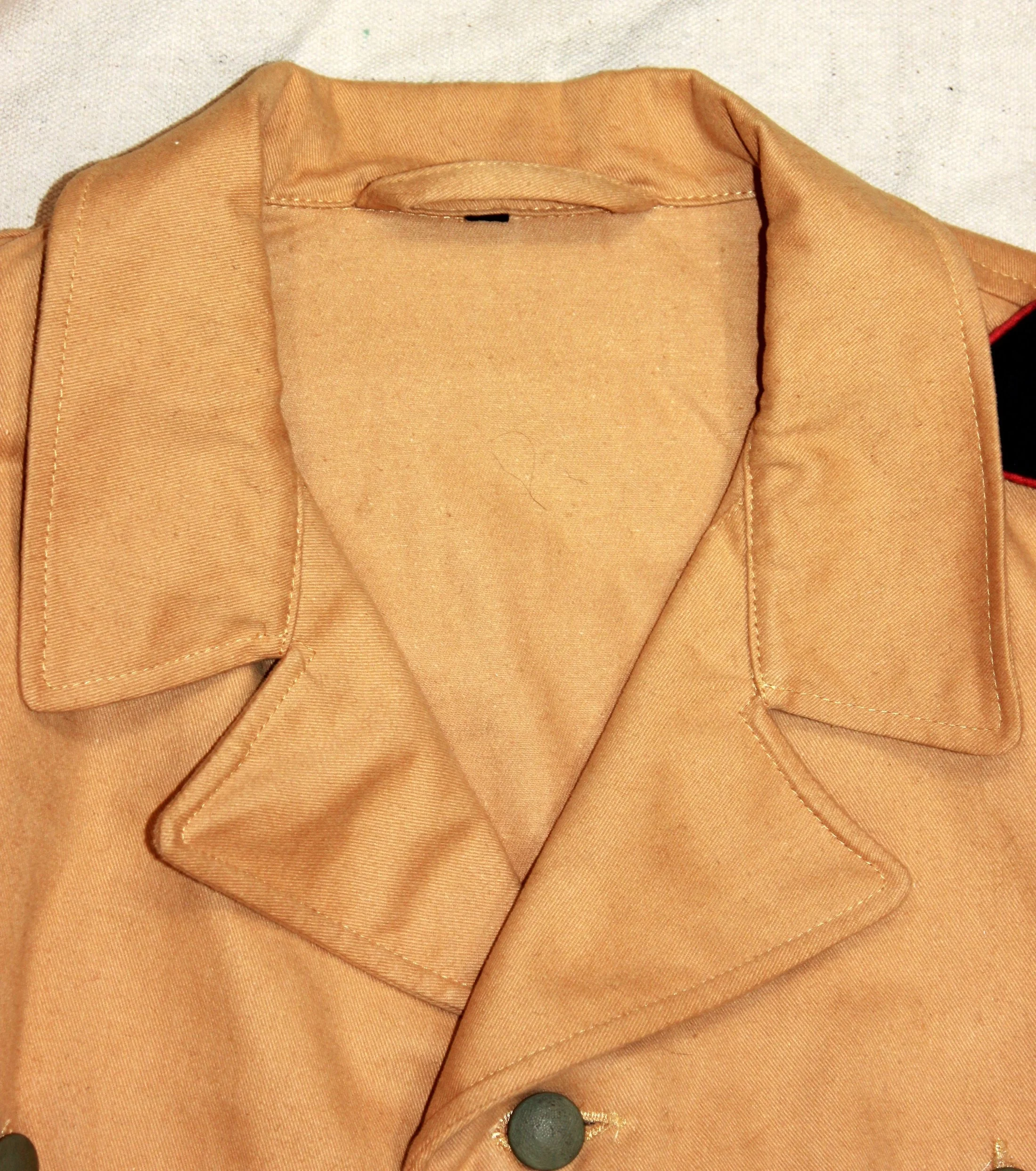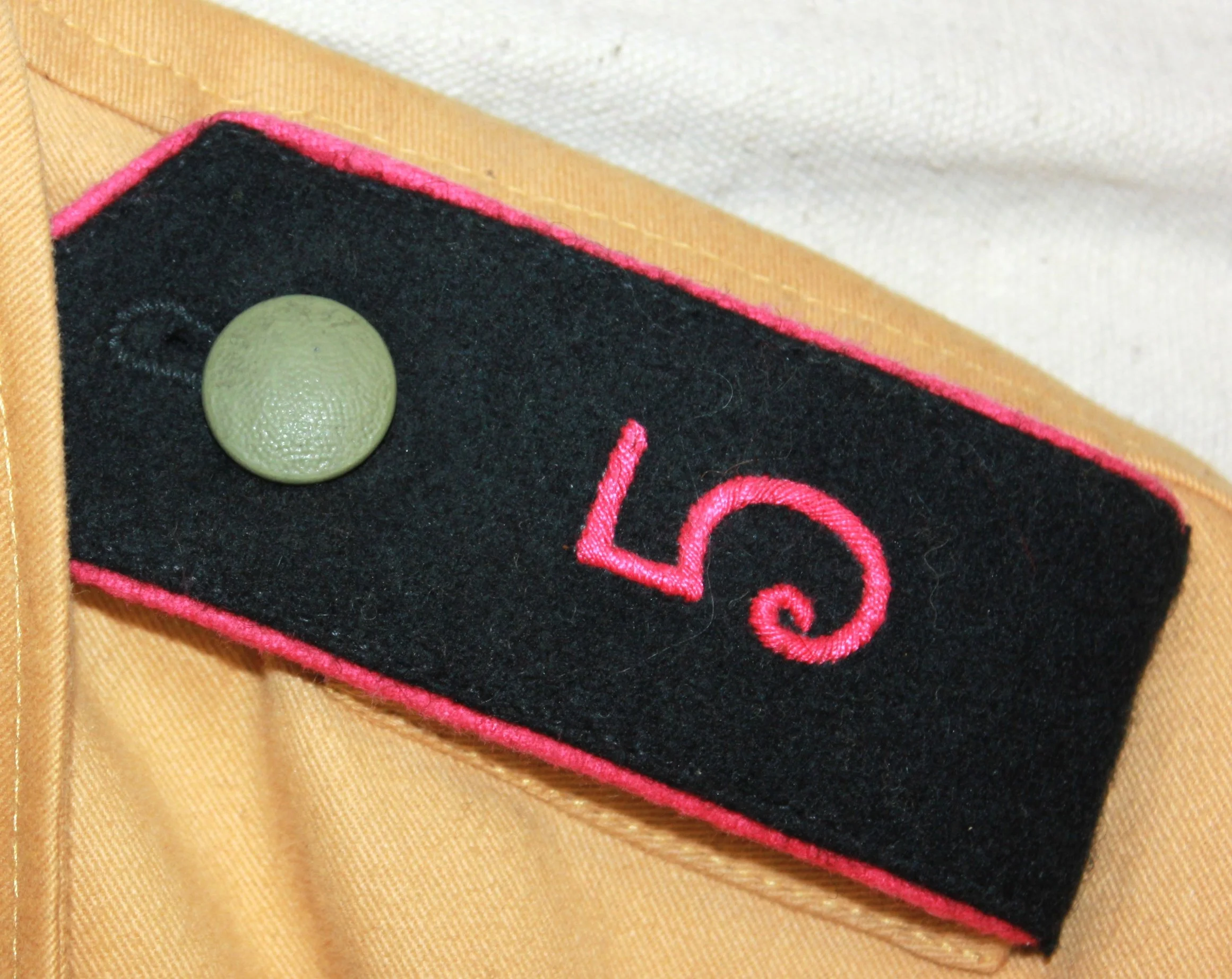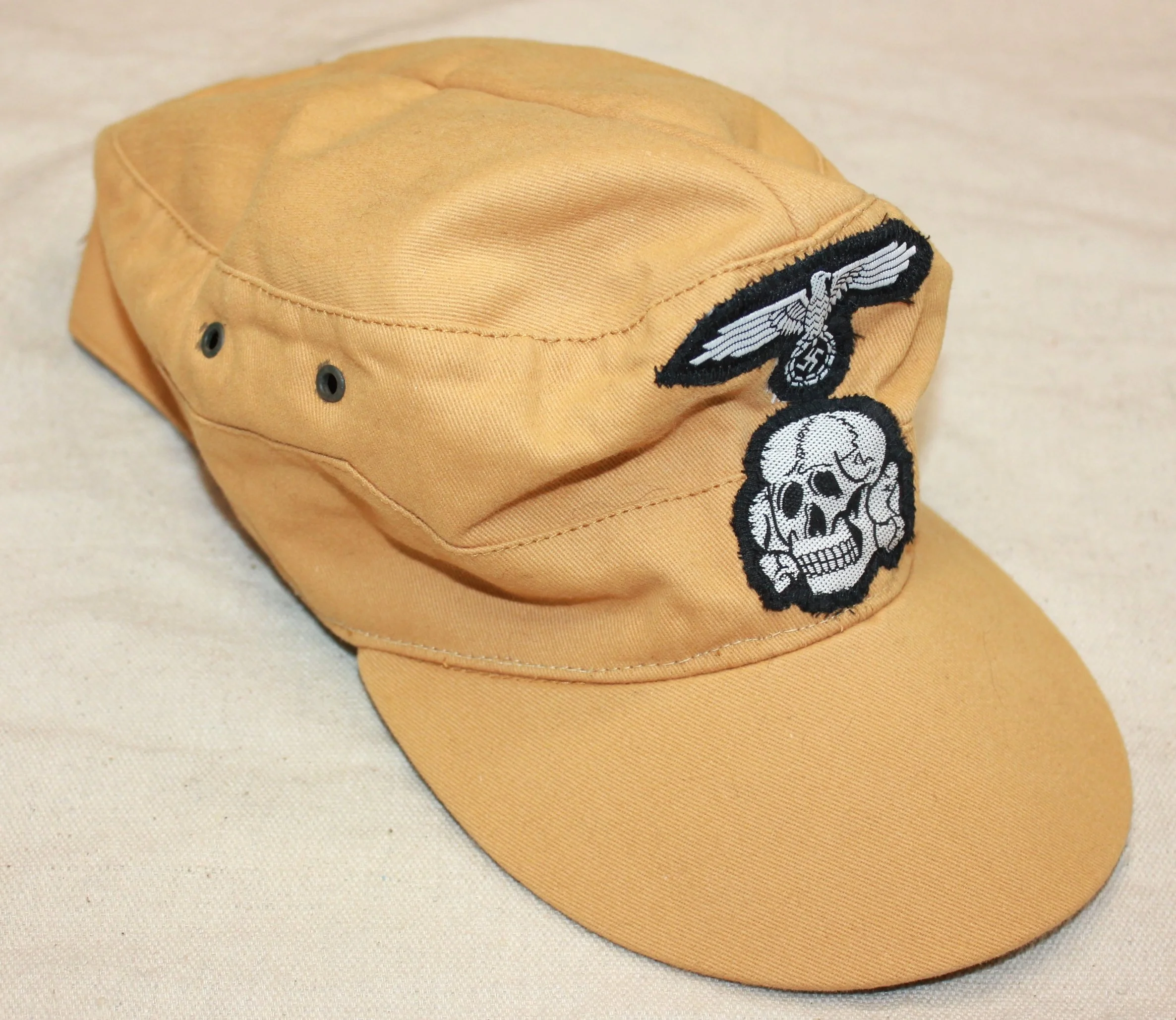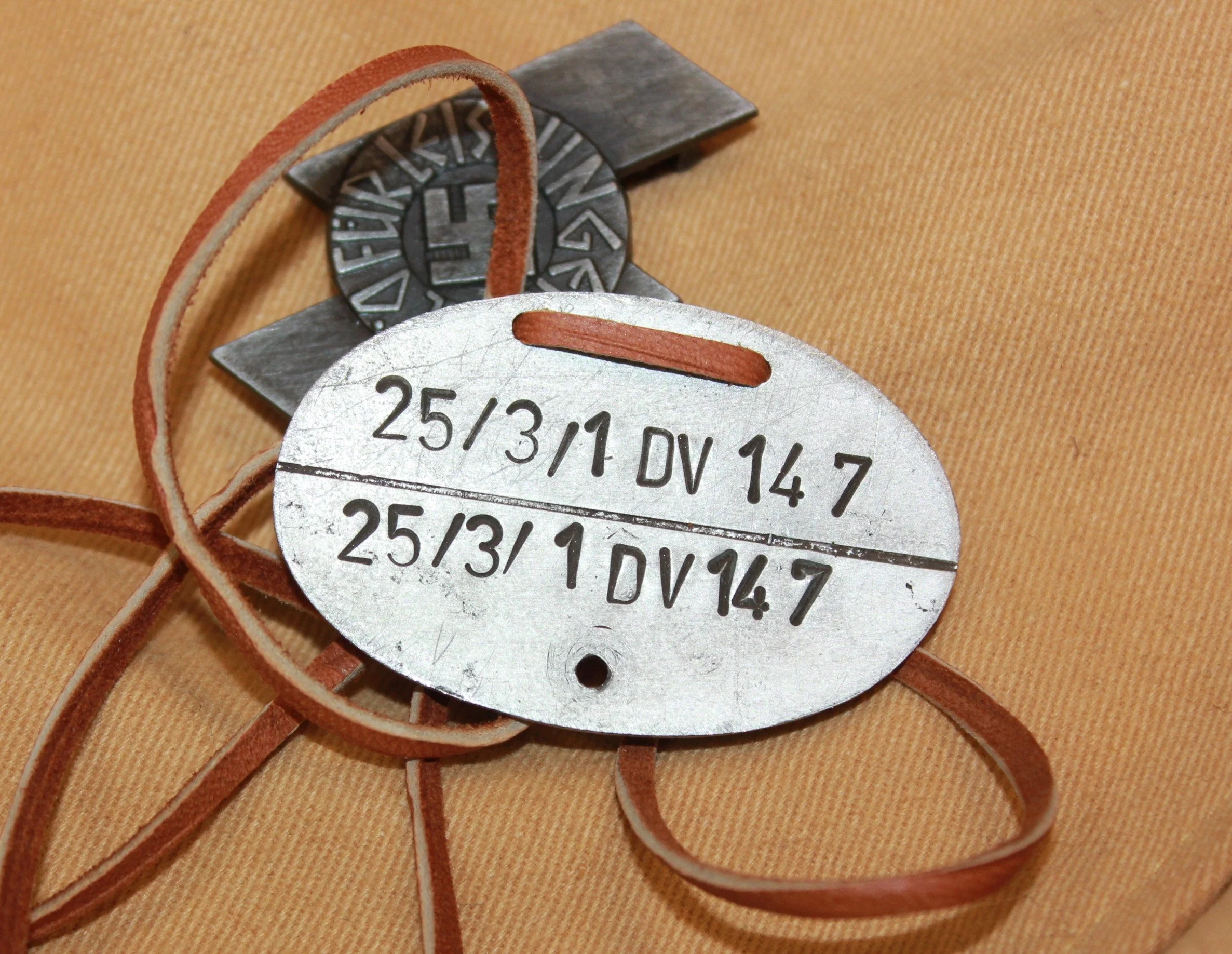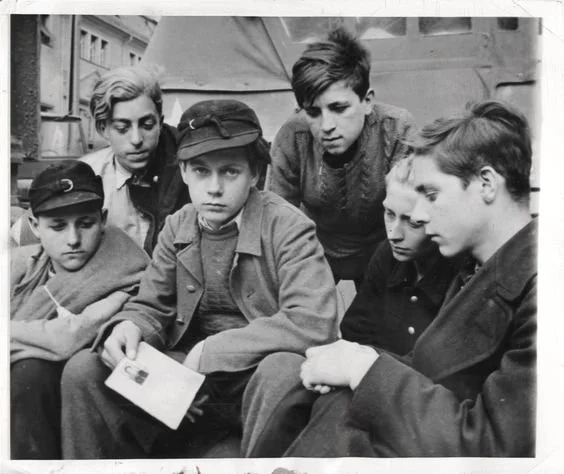The Hitler Youth Program:
“NEW” Hitlerjügend Scharführer, HJ-Banne 80. Hessen/Nassau I. Stämme Weisbaden:
Deutscher Volkssturm Wehrmacht 1945 The Hitlerjugend, abbreviated as HJ, was the youth organization of the Nazi Party in Germany. Originating in 1922, it was officially named Hitler-Jugend, Bund Deutscher Arbeiterjugend, or Hitler Youth, League of German Worker Youth in July 1926. From 1936 until 1945, it was the sole official boys' youth organization in Germany. It was composed of the Hitler Youth proper for male youths aged 14 to 18, and the German Youngsters in the Hitler Youth or Deutsches Jungvolk in der Hitler Jugend or DJ, for younger boys aged 10 to 14. In March 1922, the Munich-based Nazi Party established its official youth organization called Jugendbund der NSDAP.
Additionally, the Jungsturm Adolf Hitler, based in Munich, Bavaria, served to train and recruit future members of the Sturmabteilung or SA, the main paramilitary wing of the Nazi Party. The Hitler Jugend developed rapidly as a regimented organization, often focused on politics, for young people, particularly adolescent boys, were a familiar concept to German society in the Weimar Republic. Numerous youth movements existed across Germany before and especially after World War I.
They were created for various purposes. Some were religious and others were ideological, but the more prominent ones were formed for political reasons, like the Young Conservatives and the Young Protestants. Once Hitler came onto the revolutionary scene, the transition from seemingly innocuous youth movements to political entities focused on Hitler was swift. Following the abortive Beer Hall Putsch in November 1923, Nazi youth groups ostensibly disbanded and went underground, operating clandestinely in small units under assumed names. In April 1924, the Jugendbund der NSDAP was renamed Grossdeutsche Jugendbewegung or the Greater German Youth Movement. On 4 Juli 1926, the Grossdeutsche Jugendbewegung was officially renamed Hitler Jugend Bund der deutschen Ar beiterjugend or Hitler Youth League of German Worker Youth. The architect of the re-organization was Kurt Gruber, a law student from Plauen in Saxony.
Following a short power struggle with a rival organization, Gerhard Roßbach's Schilljugend, Gruber prevailed. By 1930, the Hitlerjugend had enlisted over 25,000 boys aged 14 and upward. On 30. In October 1931, the HJ officially became part of the SA through a decree by Hitler.
By 1944, the Hitler Jugend was a major part of the Deutscher Volkssturm Wehrmacht, an unpaid, part-time militia, and often formed special HJ Kompa nie within Volkssturm Battal ions. Volkssturm service was limited to boys over 16 years of age; however, young er boys, including Jungvolk members, often volunteered to fight in their DJ uniforms, complete with short trousers.
Adolf Hitler's last public appearance was on 20 April 1945, when he presented Eisernes Kreuz II. Klasse to defenders of Berlin, including several boys, some as young as twelve years old. The Scharführer would wear his black pullover Hemd or shirt over the standard khaki one tucked into black Hosen, the shorts in his clothing bag. He presents a soldier's appearance as he leads not only other HJ but also older men. By this time, older HJ boys had received weapon and combat training from decorated veterans home for decoration by der Führer. Many of those 17 and older had joined and were in combat with the 12. SS Divi sion ,,Hitlerjügend”.
The Scharführer is identified as part of the military by his Deutscher Volks strum Wehrmacht armband tacked to his uniform sleeve, as well as an Erkennungsmarken showing he is a member of the HJ Kompanie from his district and Stammrollnummer or unit identification number stamped on the reverse.
The idea to take school-age children and make warriors out of them has really been around for millennia. Through early Roman years, to WWI, the in the 1930s schools were politicalized, and the teachings were focused on what the would need to know, in the basic world, with a large empisis on militay ways of that life, and steard them to doing the right ting a serve their Fuhrer… unfortuneatly while the Axis lost WWII, The rest of the worrld learned how to do the same thing, yung soldiers were always needed to protect the old, because they can be manipulated and trained, and in generally better shape the older people, but it is what do you ask of your warriers, and what do you want them to beleave in.
Volkssturmmann Deutscher Volssturm Wehrmacht Insterburg, Ostpresßen
The Volkssturm was the militia raised in eastern Germany to boost fighting strength of the Reich’s depleted military. Proposed in 1944 by General Heinz Guderian, Chief of the OKW, as the Heer did not have enough men to resist the advancing Red Army. Categories of men were called into service, including those in nonessential jobs, those previously deemed unfit, overage, or underage, and those recovering from wounds. Each group of men was called up in a levée en masse which included every male.
Members of the Hitler Youth were conscripted to the Volkssturm as part of the third levy. That the boys were conscripted at the age of 16 to 18 explains the use of either their HJ or surplus Wehrmacht uniform with the addition of the Deutscher Volkssturm Wehrmacht Armband. This is not seen in photos of boys, and girls, who are seen fighting in Berlin. They were not part of the conscription levy.
Banne 5, was comprised of boys from Insterburg in Ostpreußen. Insterburg was heavily bombed as it was a production center for Luftwaffe aircraft, including the jet-powered Me 262 ‘Schwalbe’ which was demonstrated for Hitler at the local airfield. The standard Banne consisted of 5 Unterbanne totaling 3,000 boys.
The use of a Waffen SS patterned tropical uniform still replete with SS insignia alongside the HJ Schulterklappen has been documented only in this period photo. The assumption must be made that all the boys coming into the DV Gaue 25, headquartered in Königsburg, would be issued the same. The DV armband has not been laid over the HJ Armband as seen in other period photos suggesting the tropical uniform has just been issued for combat. The armband and Erkennungsmarken, a Kriegsmarine pattern, are all that identify this boy as a combatant fighting as part of the German military
Reichsjugenfuhrer Artur Axmann:
Axmann was born in Hagen on 18th February 1913. He studied Law and in 1928, founded the first Hitler Youth group in Westphalia.
In 1932, he was called to be a Reich Leader (Reichsleiter) of the NAZI Party to carry out a reorganization of Nazi youth cells and in 1933, became Chief of the Social Office of the Reich Youth Leadership. Axmann gained a place for the Hitler Youth in a direction of state vocational training and succeeded in raising the status of the Hitler Youth agricultural work.
As the war came to the Reich, having no military background, Axmann joined the here as a soldier and became an NCO. He was on active duty on the Western Front until May 1940 and then was severely wounded in the early stages of the Russian Campaign losing an arm. In August of the same year, he succeeded Baldur von Schirach as Reichsjugendfuhrer or German Youth Leader of the Nazi Party.
On 4 January 1944, Axmann was awarded the German Order, the highest decoration that the Nazi Party could bestow on an individual, for his services to the Reich. He and one other recipient, K. Hierl, were the only holders of the award to service the war and its consequences. All other recipients were awarded it posthumously or killed during the war or its aftermath. No pictures of Axmann wearing the award have been found.
During 1945, Axmann was continually pressured into letting young women be conscripted into combat roles for the last defense of Nazi Germany. Although Axmann had permitted young boys to fight in the final days, he refused to let girls fight in the front lines. He stated, “Women bring life into the world, they do not take it”.
During the last weeks of the war, Axmann commanded units of the Hitler Youth (Hitlerjugend), which had been incorporated into the Home (Volksturm). His units consisted of mostly children and adolescents. They primarily fought in the battle at the Seelow Heights (Seelower Honen), which was a part of the bigger battle of ‘Berlin’ (Endkamf un Berlin). None of the young people fighting for Germany under Axmann died having never received either military training or equipment to fight with.
During Hitler’s last days, Axmann was among those present in the Fuhrerbunker. On 30th April 1945, just a few hours before committing suicide, Hilter signed the order to allow the breakout. On the 1st of May, Axmann left the Fuhrerbunker with SS-Doctor Ludwig Stumpfegger and Martin Bormann as part of a group attempting to break out of the Soviet Encirclement their group managed to cross the River Spree at the Weidendammer Bridge.
Leaving the rest of their group, Bormann, Stumpfegger, and Axmann walked along railroad tracks to Lehrter Station. Bormann and Stumpfegger followed the tracks towards Stettiner Station, Axmann decided to go alone in the opposite direction of his two companions. When he encountered a Red Army patrol, Axmann doubled back and later insisted he had seen the bodies of Bormann and Stumpfegger near the railroad switching yard (Stettiner Bahnhof) with moonlight clearly illuminating their faces. He did not check the bodies, so he did not know how they died. He avoided capture by the Soviet Troops and disappeared. Axmann, presumed dead, lived under the alias of “Erich Siewert” for several months.
Axmann was arrested in December 1945 when a Nazi underground movement he was organizing was uncovered. A Nuremberg de-Nazification court sentenced him in May 1949 with a prison sentence of three years and three months as a “Major Offender”.
After his release, Axmann worked as a sales representative in Gelsenkirchen and Berlin. On 19 August 1958, a West Berlin de-Nazification court fined the Former Hitler Youth Leader 35,00 marks or $8,334.00 about half the property he owned in Berlin. The court found him guilty of indoctrinating German youth into National Socialism right until the end of the Third Reich but concluded that he had been a Nazi from inner conviction rather than, a base of motives. During this trial, Axmann told the court that he had heard the shot by which ‘Hitler’ committed suicide. He also stated that he had attempted to escape from central Berlin along with Martin Bormann, who he said had died in the attempt. Axmann became a prosperous businessman after the war. He died in Berlin in 1996.
